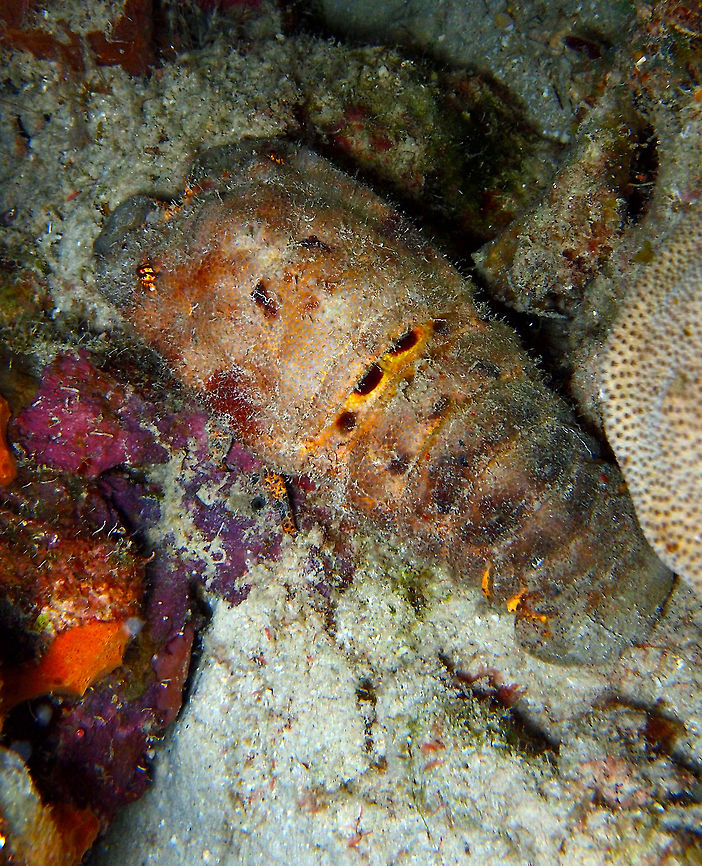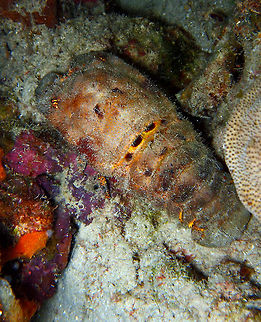 Species introCountry intro
Species introCountry intro
Spanish Slipper Lobster
Sep 13, 2017. Night dive in Bari Reef, Bonaire.
Description:
The animal has a broadly oval shape, because the antennae are flattened into plates and the legs are short compared with real lobsters. No tooth-like spines at the edges of the antennae. Body and appendages are yellowish to reddish with brown splotches. Main feature is a horseshoe shaped black spot just behind the carapace on the first tail segment. It is flanked by two more black spots. The center of this horseshoe shaped spot may be bright yellow. When the carapace is covering part of the spot, it may look like two separate spots.
Maximum total body length over 30 cm; carapace length up to about 12 cm.
Habitat:
Depth range from 0.6 to 180 m, usually between 0.6 and 64 m; on a substrate of sand or rocks, often on the outer reefs. The animals are sluggish and nocturnal and feed on (dead) animals, detritus, etc. They bury themselves in the sand.
Distribution:
All throughout the Caribbean.
Remarks:
Nocturnal.
http://species-identification.org/species.php?species_group=caribbean_diving_guide&id=135

''Scyllarides aequinoctialis'' is a species of slipper lobster that lives in the western Atlantic Ocean from South Carolina to São Paulo State, Brazil, including the Gulf of Mexico, Caribbean Sea and Bermuda. Its common name is Spanish slipper lobster. It grows up to 30 centimetres long, with a carapace 12 cm long. ''S. aequinoctialis'' is the type species of the genus ''Scyllarides'', and the first species of slipper lobster to be described from the Western Atlantic.
